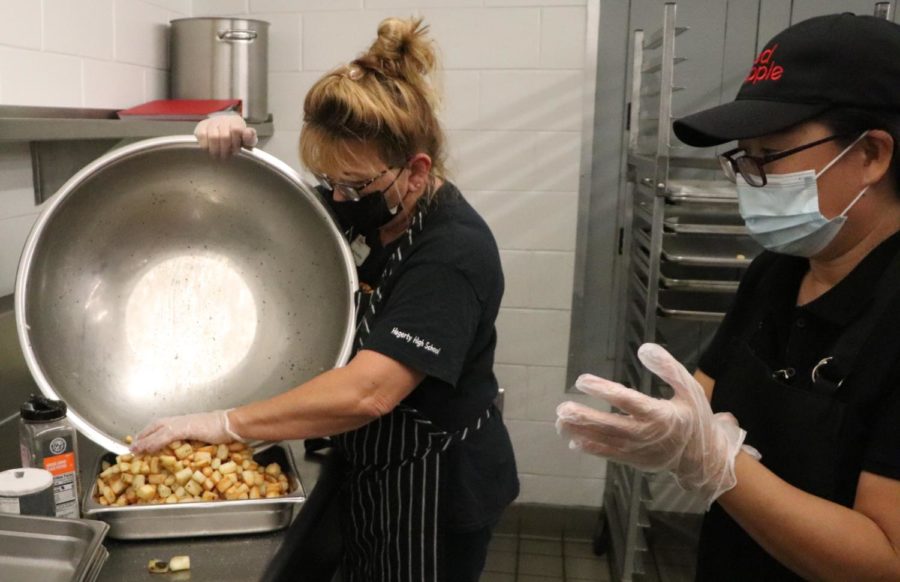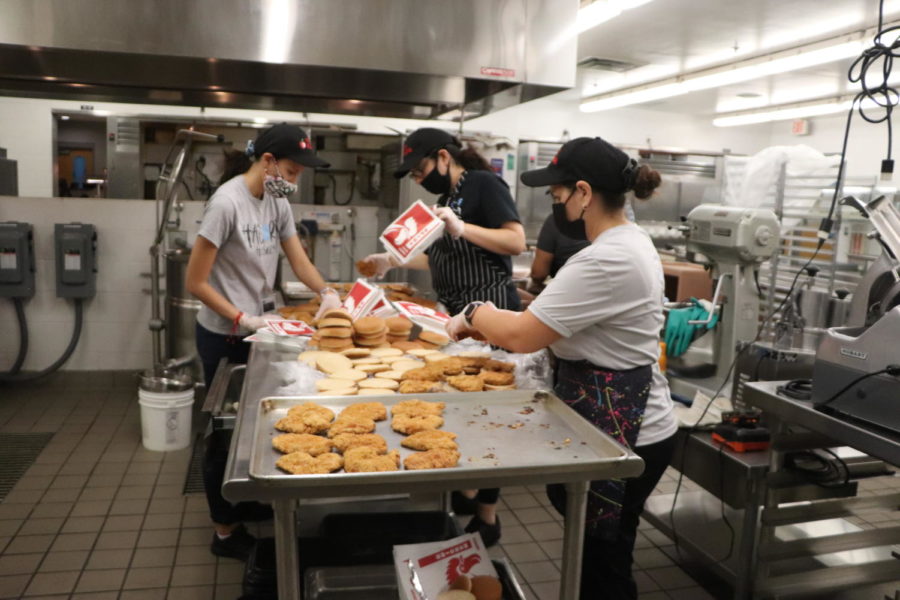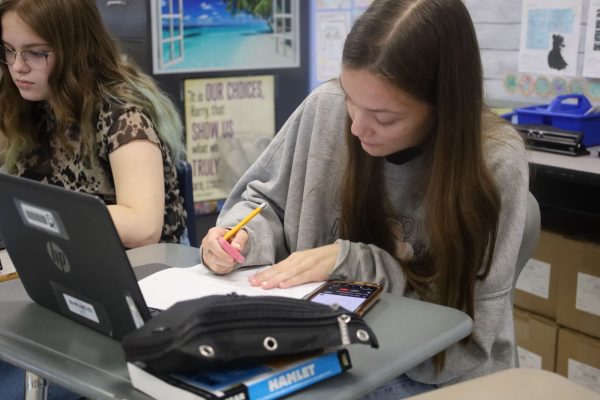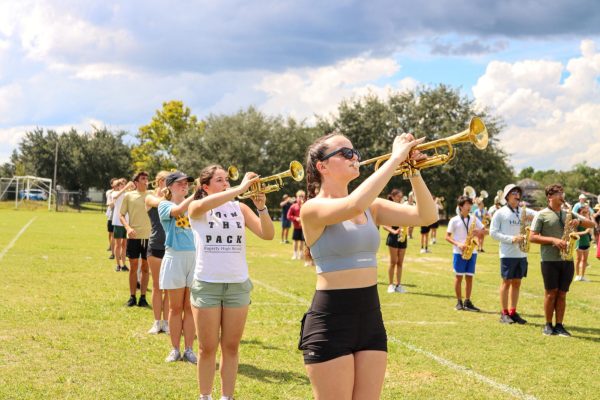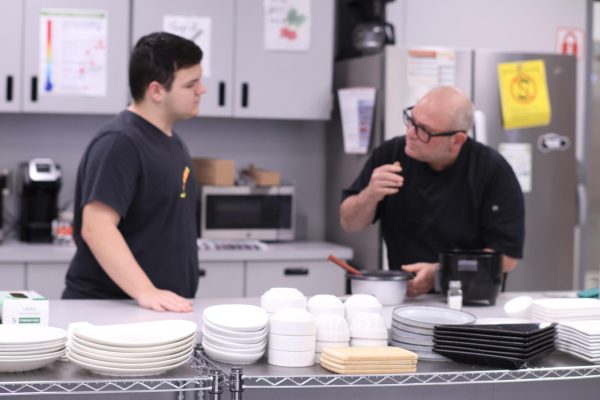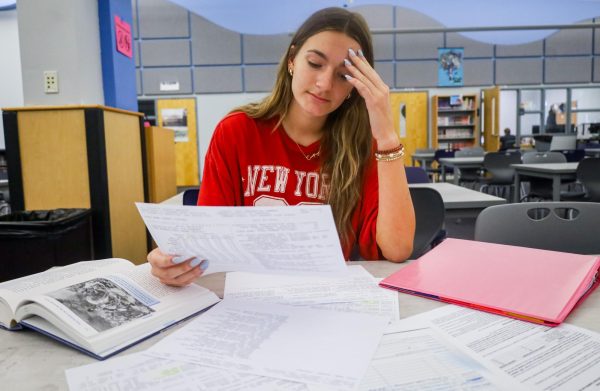Alternatives and accomodations
Students remain unsure about the options provided at lunch
photo by Zahra Ateeq
Cafeteria worker Jennifer Zoccolillo prepares hash browns. These are part of the district’s “breakfast for lunch.”
Cheese pizza, chicken burgers, and granola parfaits. What’s for lunch? Although the answer is simple for many, students who have to accommodate food restrictions are less certain.
To tackle these restrictions the cafeteria staff provides accommodations for people who cannot eat certain food items. Cafeteria manager Erin Basillo emphasizes this through her description of what can be done if a student does not particularly enjoy the meals at school, and how certain items can be used as substitutes.
“We always have salads for people who don’t want any animal product whatsoever,” Basillo said, “even though there is cheese and meat in certain salads, these items do not touch the veggies themselves, and can be removed.”
However, providing alternatives that students appreciate is not easy. Sophomore Cailin Kilkenny, a vegetarian since fourth grade, does not particularly enjoy the meals the cafeteria provides for people who cannot eat meat or chicken.
“I buy lunch like twice a week, and it’s always the same three: veggie burgers, parfaits and cheese pizzas,” Kilkenny said. “The pizza is fine, but it’s not the type of food you would want to eat all week.”
Kilkenny claims that meat is the main focus of the meals provided at school, and without them, the food options can be considerably bland.
Sophomore Amari Patel has been vegetarian her whole life and feels that the school could put in more effort with what is being provided as a vegetarian’s typical meat counterparts.
“Certain restaurants have a lot more variety and options, and substitutes that can easily make meals vegetarian,” Patel said. “For example, instead of chicken, you could get some type of tofu.”
With the growing population of students who have food restrictions, students such as Patel and junior Sofia Federman bring lunch from home to supplement the options they may have.
“The school might have more options since they have parfaits and yogurt, but I buy lunch from home because of the line, but I also would not be able to get certain meals [as a vegetarian],” Federman said.
Sophomore Arianna Cruz also brings lunch from home, but as someone with severe tree nut allergies, she believes that the school does a good job with restricting certain foods in the lunch line for those with allergies.
“They have a ton of different options for allergies and everybody is able to get different stuff, [for example] I can eat most of the stuff the school provides,” Cruz said.
Meal options for those with food restrictions vary from district to district and state to state.
“[The] majority of the time the lunch line has meat in it. When I lived in Michigan there was a vegetarian option specifically,” Patel said. “There they had a vegetarian option and a meat-eater option every single day. For example, sometimes we would get grilled cheese.”
While school dining still lacks variety when it comes to their vegetarian or gluten free menu, Basillo explains that food restrictions should not be a dilemma, as long as the student speaks to the cafeteria staff. Sophomore Ayden Krob has a gluten restriction and has spoken to the cafeteria staff to be provided with lunch meals without gluten everyday.
“Sometimes I get gluten free pizza instead of a gluten free substitute of the meal and the staff does have to prepare the meal separately for gluten restrictions,” Krob said. “Mostly if something like chips are not gluten free there’s multiple types and that can be substituted.”
Krob said that dining at school is “a nice commodity to have” and the cafeteria staff emphasizes that anyone with food restrictions can have this commodity if they communicate, and with their new pizza oven it is much faster to accommodate a larger number of students.
“The one student we make a gluten free meal for every day, he knows what line to go to, he knows his meal is going to be there,” Basillo said. “Some students don’t speak up and say that they can’t eat certain foods though, and I know [during Lent] Catholics can’t have meat on Fridays. so we know we’re going to make a lot of cheese pizzas that day so we’ll make an excess amount.”
Cheese pizzas are one of main meals that can be flexible and often work for those who are vegetarian or vegan. Basillo also explains that the cafeteria staff could make specific salads for those who don’t want meat products, or certain meals that the school provides.
“Once a student is willing to talk to us and let us know what they need, we’re willing to work with them and see what we can make,” Basillo said.
At the end of the day, many students acknowledge that the school lunch is not going to be perfect.
“Since there are so many students with differentiating food preferences, I do not think that school lunch could ever truly be perfected,” sophomore Katie Pham said.
Your donation will support the student journalists of Hagerty High School. We are an ad-free publication, and your contribution helps us publish six issues of the BluePrint and cover our annual website hosting costs. Thank you so much!

